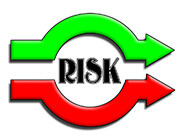The cost of medical malpractice continues to rise, according to the Aon/American Society for Healthcare Risk Management (ASHRM) Hospital and Physician Professional Liability 2013 Benchmark Analysis. This annual study helps health care providers better understand trends related to medical malpractice risks. It also provides benchmarks for hospitals and physicians to compare to their own claims histories.
From 2011 to 2012, the average cost of medical malpractice related to small claims (defined by the study as those below $2 million) grew at the slowest rate in the 14-year history of the study. Aon/ASHRM project the average cost per small claim to be about $172,000 in 2013, representing a 2.5 percent increase over 2012.
|
Average Time to Closure How long can you expect a malpractice case to linger on? The average time to close a claim in the United States was 21 months in 2012, according to the Aon/ASHRM study. As you might expect, small claims usually close faster than large claims. In 2012, claims below $100,000 closed within 18 months on average. Claims above $500,000 took an average of about three years to close. High-severity geographic markets -- including Philadelphia, Chicago and Washington, D.C. -- generally experience the longest closure times in the country. |
Big Claims Get Bigger
But large claims (defined by the study as those $2 million or higher) are rising at an alarming pace. In fact, the study reports a 7.7 percent increase in claims severity (that is, the average cost per large claim) between 2011 and 2012. Why? One possible explanation provided by the Beazley Group, a London-based insurer who partnered with Aon to analyze these large claims:
Plaintiffs' attorneys have shifted focus to high severity cases, driven by catastrophic injuries and the potential for large awards, in lieu of pursuing high volumes of relatively low value cases.
Put simply, small claims don't provide attorneys with as much "bang for the buck" as large claims do. Plaintiffs' attorneys are often paid on a contingent basis, and it takes many small cases to add up to one large claim. Moreover, health care providers may be less eager to litigate high profile cases, which risk damaging their professional reputations. So, they often settle -- rather than fight in court -- even when the facts and evidence are in their favor.
High Risk Markets
The Beazley Group's findings also reveal geographic markets with the highest average cost of large claims in 2012:
- Philadelphia ($708,000);
- Chicago ($691,000); and
- Washington, D.C. ($677,000).
Nationwide, the average cost of large claims was $358,000 in 2012, nearly half the cost of these high-severity venues.
In "tort reform" states that have imposed a cap on either noneconomic or overall damages, the average cost of large claims is lower than in states that don't impose any limits. But the differential is narrowing, especially in California and Maryland where health care providers have recently been hit with some of their largest ever medical malpractice awards.
Attorneys in tort-reform jurisdictions have become adept at fleshing out economic damages, such as the costs of wheelchairs, nurses and special equipment over the victim's remaining life. Unlike losses from pain and suffering, economic damages are typically not capped in tort-reform states.
Another high-risk area for large claims is catastrophic injuries involving obstetric services. This niche accounted for about one-third of claims $2 million or higher -- and almost half of claims $5 million or higher. Obstetrics claims costs are growing faster than the rate of increase of any other practice area.
Take Control of Your Risks
The most effective way to lower the incidence and severity of malpractice claims is to implement a continuous improvement program, aimed at providing the safest, most effective patient care. Hospitals and health care providers may need to investment in new equipment, team training and simulation techniques, and other types of continuing medical education to stay atop their games.
Moreover, malpractice risks evolve with changes in demographics, technology and the regulatory environmental. Each year, hospitals and physicians should re-evaluate their risks, benchmark their claims against other "comparable" providers and modify their insurance coverage, if necessary. Practitioners with coverage gaps or who operate in high-risk markets may need to purchase additional coverage.
In the long run, however, hospitals and physicians can lower their claims and insurance costs by banding together and fighting the "good fight." Even though a high profile case might cause some temporary bad press, resist the urge to settle for an excessive amount.
In general, don't be afraid to litigate -- if the evidence is in your favor and the plaintiff seems to be exaggerating facts or economic losses. A financial expert can help health care providers quantify a plaintiff's economic damages -- or rebut an estimate prepared by the plaintiff's expert.




